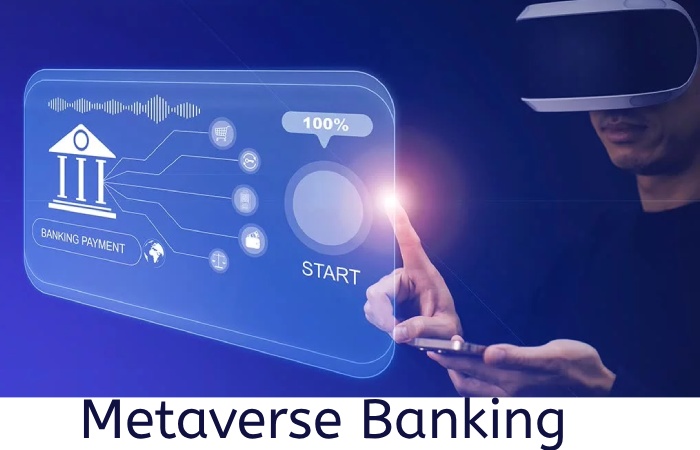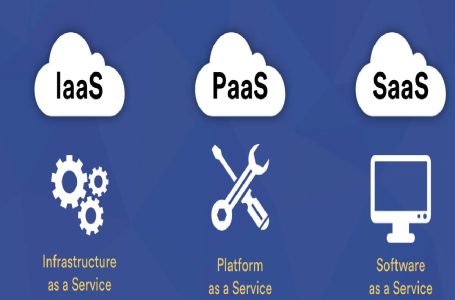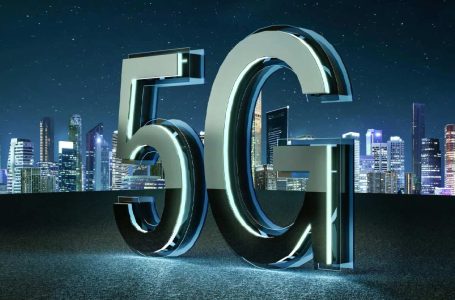What is the Metaverse?
The Metaverse is a computer industry concept about the future of the Internet: a single, shared, immersive, permanent, three-dimensional virtual place where people can experience life in ways they cannot in the physical world.
It refers to a wide range of augmented experiences, from online recreational video games like Fortnite and online casinos like Lucky Block to the development of virtual workplaces. Like Microsoft’s Mesh or Meta’s Horizon Workrooms, virtual locker rooms, and operating rooms.
People can cooperate and feel connected regardless of where they are in the real world. Avatars – animated representations that function as human representatives – often wander around and interact with others in the Metaverse.
How are banks exploring the Metaverse?

Banks are exploring the Metaverse through strategic alliances and joint ventures with technology companies to help transform platforms into actual vehicles of economic opportunity.
Candidates can use metaverse technology to experience a day in the life of a specific job and see if the position fits their needs. At a physical job fair, interested applicants can use VR headsets to connect with hiring managers in various locations across the U.S.
Below, we review how some banks plan to incorporate the Metaverse into their operations.
Kookmin
Kookmin Bank, one of the most important financial institutions in South Korea, has entered the virtual sphere by creating the K.B. Metaverse V.R. Branch Testbed. Customers can use a head-mounted V.R. device to access metaverse financial services.
Sharebox, a V.R. content producer, created the virtual banking service, and a bank employee will be able to process transactions such as remittances. Face-to-face conversations between consumer avatars and employees will also be allowed.
The virtual bank has an entrance, a VIP room, and a central lobby where users can obtain personalized financial information. K.B. plans to use the virtual branch to educate young people in finance and train employees.
Jinsoo Yoon, Vice President of the Technology Group at KB Kookmin Bank, said that adapting to the new technological era is a necessary step.
The purpose is to preemptively respond to the financial changes of the next metaverse era and internalize new financial services experiments and technological capabilities.
D.B.S.
DBS BetterWorld, which supports environmental, social, and governance (ESG) activities, was launched in the Sandbox. The Sandbox is a decentralized virtual environment in which companies and consumers purchase plots of “land” to create a unique experience.
DBS purchased nine virtual land plots to create an interactive experience that promotes a more sustainable future. They intend to work with the government, communities, businesses, and technology.
As it seeks to provide access to ESG investments and help customers live more sustainably, the bank aims to leverage the Metaverse to advance its ESG agenda across all banking and business operations.
DBS BetterWorld is the bank’s platform to promote these causes through Sandbox visitors, who can learn about various ESG challenges, particularly those related to the company.
Additionally, the bank used this platform to highlight social entrepreneurs and their creative business ideas.
HSBC
Animoca Brands, the Hong Kong-based producer of The Sandbox gaming environment, said HSBC would buy a block of virtual land in its environment.
Companies use the Sandbox grounds to host games and tournaments. According to the company, it has more than 40 million downloads and 1.2 million monthly active users. HSBC will use its narrative to reach sports, esports, and gaming fans.
The Metaverse is a way for users to experience Web3, the next generation of the Internet, through augmented reality (A.R.), virtual reality (V.R.), and extended reality (R.X.), according to Suresh Balaji, director of marketing for Asia-Pacific of HSBC, with assets of 3 billion dollars.
JP Morgan
JP Morgan has $2.6 trillion in assets and has established its presence on Decentraland, a virtual environment where users can purchase digital properties. According to Yahoo Finance, Decentraland has more than 300,000 monthly and 18,000 daily active users.
When a person’s avatar enters Decentraland’s Onyx by JP Morgan lounge, they’ll discover an illuminated portrait of Jamie Dimon, a strolling tiger, and a few wall-mounted displays. When users click on one of the monitors, a video “demo” begins of how payments can be made in the space using smart contracts. Another shows a timeline of the bank’s blockchain initiatives.
The same JP Morgan Payments team that built the virtual room last month published a white paper on the Metaverse’s commercial potential. The virtual room and document are supposed to help initiate interactions with customers.
T.D.
T.D. is delighted with the results of its pilot program, which ran from January to April 2023. According to Jennifer Sanders, associate vice president of global top talent and executive search at the bank, 92% of co-op students and interns surveyed said the V.R. experience enhanced their co-op and intern experience.
Employee metaverse avatars can talk with their hands, walk, blink, and move their mouths while speaking. However, significant obstacles remain. In particular, the avatars only show the head, neck, upper shoulders, and chest, and the disembodied hands move from side to side.
Sanders stated the following:
Some of the participants in the pilot project have told us that, although they consider themselves introverts, the virtual reality environment gives them the confidence to interact with their colleagues and executives more comfortably than in a traditional Webex or in-person environment. With client-advisor sessions, T.D. also tests a consumer experience in the Metaverse. Clients who cannot meet in person or choose not to use the bank’s Webex service will one day be able to meet with an advisor in a secure, private location on a virtual platform to review their portfolio.
Banks are preparing their financial advisors and wealth managers to offer Web3-based financial solutions, including ETF metaverse products and metaverse indices, driven by the growing market capitalization of metaverse tokens and the trends of millennials, Generation X, and Generation Z to invest in digital assets.
RBC
Meanwhile, RBC is using the Metaverse as part of its campaign to teach financial literacy to children and teenagers in the places they visit.
According to Jason Storsley, senior vice president of daily banking at RBC and leader of its youth and young adult client segment team, the bank primarily focuses on the online gaming platform Roblox.
Players could enter an RBC branch, interact with advisors, and participate in a scavenger hunt in which they collected items and searched for RBC’s mascot, Leo the Lion. Each interaction includes a financial literacy lesson. RBC virtual coins can exchange for in-game goods or materials to complete missions.
The final result
The immersive metaverse experience allows banks to exploit new methods to connect with their next-generation customers while expanding their reach to decentralized platforms and communities platforms and communities.
Customers are encouraged to use AR/VR devices to check account balances, make payments, transfer money, and complete transactions.
Banks can reconnect with consumers throughout the customer journey and create meaningful connections. The younger, tech-savvy generation will likely be the primary financial service users.
Moreover, banks must start promoting themselves as providers of financial knowledge, advisors, and experts in customer communication.





